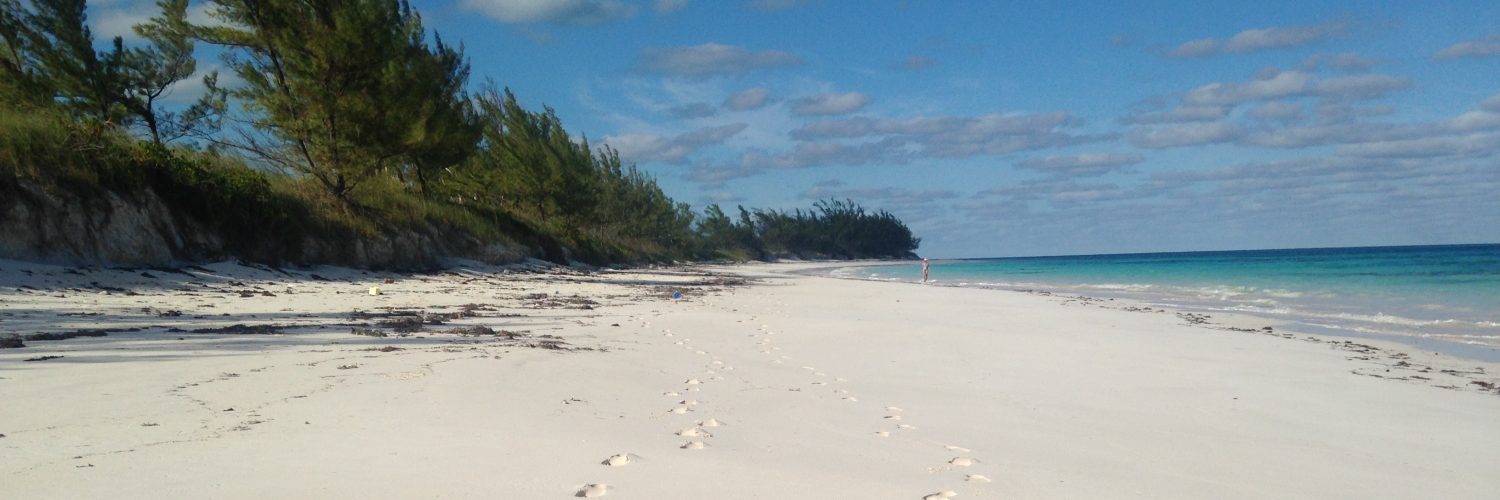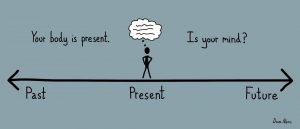Mountains are often admired from afar for the qualities that they appear to have. Some of these qualities we find beneficial and seek in life: stability, longevity, calm, unwavering and balanced. When we spend some time really contemplating the image of a mountain, we see that it is constant and reliable through the seasons; it is a home for plants and animals; it provides shelter and protection; it abides in tranquility through the centuries.
While it’s often the case that we try not to actively ‘think’ in passive meditation, we can use the visualisation of a mountain in active meditation to assist us in contemplating and finding inner peace. If we spend time on the visualisation we can imagine ourselves taking on the qualities of the mountain.
The Mountain Meditation can be used as a regular practice or as an escape from the rigours of daily life as and when required. I use the Mountain Meditation often as a precursor to sitting with mindfulness of breathing; it acts as a relaxation technique and brings focus before working on expanding awareness.

How to do it…
- Sitting in a comfortable position on a cushion or chair, have the back straight but not tense and the hands resting in the lap.
- Bring the gaze down towards the floor and gently close the eyes.
- Spend a few minutes on breathing meditation/mindfulness of breathing
- Picture in your imagination a mountain – it could be a snowy mountain of the Alps or Himalayas, it could be a forested mountain bathed in sunshine
- Try to bring your image of a mountain into clear focus
- Observe its shape, lofty peak, solid based, gentle or sharply sloping sides, its surface (rocky, smooth, dusty, forested, snowy etc)
- Notice it’s enormous size and how solid and unmoving it is from afar and up close
- Try to bring the qualities of the mountain into your own body – your head becomes the lofty peak, sitting in your chair you are rooted at the base. Your arms become the slopes of the mountain. Feel the sense of uplift from the base of your body projecting through the crown of your head.
- The mountain experiences the force of the seasons – sun, rain, snow, gales. Through it all, it sits unchanging, experiencing all that comes its way
- The mountain never resists, complains or judges – it accepts everything, just being itself
- We can imagine embodying the same unwavering stillness and calmness.
- We can experience the fullness of life and its changes through the seconds, hours, years
- We will experience the changing nature of our minds, our body, the outside world. We will have periods of shade and of light. We can maintain the peace of the mountain throughout.
- Sit in stillness for a while.
- Gently open your eyes and mindfully arise from meditation after around 20 minutes.
How to Sleep Well and Rise Well in the Darker Months
Regulating your body clock can be a difficult task in the winter months as we set off for work in the dark and come home in the dark. It starts to become a struggle to get out of bed and sleep is often disturbed and unrefreshing. Add in the potential for Seasonal Affective Disorder (SAD) and it can feel like a real challenge to find motivation.
Women are often more susceptible to SAD but also more likely to struggle on without any help. The good news is, that there are some simple essential oil remedies that can both relax you in the evening for restful sleep and energise and motivate you for the day time.
Lavender (lavandula augustifolia) 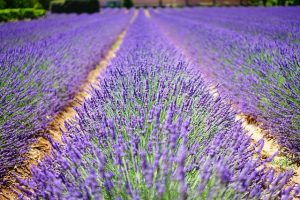
The champion of champions in the aromatherapists kit bag. This wonder plant is very well known for its sleep inducing qualities. It also has the ability to reduce anxiety and emotional stress and is a strong antioxidant making it excellent for pain reduction and skin replenishment. Add a few drops of lavender essential oil to a lavender filled pillow or bag and hang it near the head of the bed. The relaxing, floral aroma will help you drift off.
You can also add a few drops of lavender essential oil to water and using a mist spray bottle, mist your bedding so that the aroma is an encompassing experience.
Lemon (Citrus Limonum)
A long-time favourite of mine, this zesty essential oil is great for enlivening you when the afternoons and dark evenings are dragging and for enhancing concentration. Although lemon is a stimulating oil, it is also calming and works well as a pairing for lavender or on its own. As an extra benefit, lemon is great for calming the digestive system.
Add a few drops to a burner mixed with water to freshen the air after a long day at work (this is when mixing lemon with lavender would be a winning combination) or for use during the day, add a drop or two to a tissue and inhale the refreshing aroma while at your desk or in the car. If you don’t like the fragrance of lemon, you can try grapefruit essential oil instead.
Jasmine (Jasminum Officinale)
Jasmine has a distinctive sweet and flowery fragrance which can be quite heady for some. It does however, have great properties for relieving the blues that often come when the darker months are dragging on. When vaporised (by placing in a burner with some water) Jasmine stimulates the autonomic nervous system and enlivens and awakens the mind and body. It is also excellent as a room fragrance and can be mixed with water for use in a mist spray bottle.
Rose (Rosa Damascena) 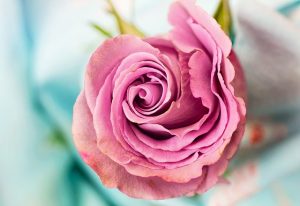
Known for its strong but pleasing floral fragrance, rose essential oil is excellent for calming anxiety or stress and is a friend to those who struggle to regulate sleeping in the darker months. Inhaling rose essential oil through vaporisation (by placing in a burner along with some water) will relax the mind and body. Not a scent to be used when looking for alertness, the properties of this oil are all about relaxation. It has a beneficial uplifting effect on the mood, but really helps sooth the body into a good night’s sleep.
Sandalwood (Santalum Album)
Sandalwood has been used for many hundreds of years for its antidepressant and anti-anxiety qualities. It is also recognised for its properties of focusing the mind. By adding a few drops of sandalwood to a tissue and inhaling throughout the day, it can help to improve the mood and attentiveness but also calm and relax the body.
Sandalwood makes an excellent room fragrance when vaporised, but has the same beneficial properties when burnt in the form of cones or incense sticks. The fragrance can be a little overpowering for some, so as an essential oil it should be used sparingly.
Mental Health Awareness with 1st Armitage Scout Group
The importance of raising awareness and recognition of mental health conditions is gaining a lot of support in the press and is high on the agenda for employers and health groups. It was great to hear that the Scout Troop Leaders at Armitage were exploring the theme of mental health with the Scouts over a number of weeks. Different activities were tried by the Scouts to encourage stress reduction and ways of helping to improve mental health.
I was invited along to teach a yoga class for the Scouts including some relaxation and meditation. There were around 30 Scouts ranging from 10 – 16 years old and all very eager to get started with yoga! I gave an introduction telling the Scouts how yoga can help improve mental health through concentration in the present moment, release of endorphins and breath control.
We tried some breathing exercises to lower the heart rate and increase oxygen circulation before going into a class themed with animal postures to keep the Scouts engaged throughout. After some downward dogs, dolphins, camels, tigers and flamingos thrown into the mix, we settled down to a final relaxation of counted breath. Surprisingly, quiet came to the room as everyone concentrated on their relaxation.
The session was a big success with the Scouts and the Troop Leaders who joined in, and gave a valuable taste of an alternative method for improving mental health.
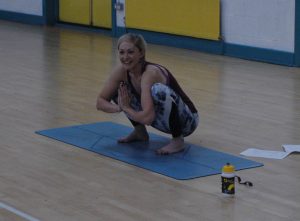
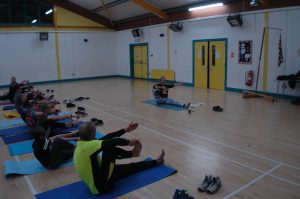
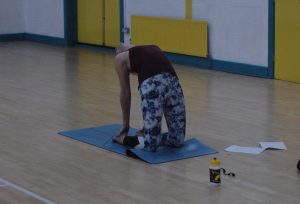
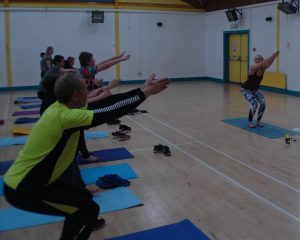
Mindfulness Courses Now Available
Mindfulness is a practice of widening our awareness and insight so that we can live in the present moment without judgment. The ability to watch our minds and the busyness within as an observer rather than through grasping onto thoughts, allows us to experience a greater freedom and peace of mind. The skills of mindfulness can be used in daily life to reduce stress and anxiety, be more productive and develop better relationships at work and at home and lead to a greater sense of physical and mental wellbeing.
The following mindfulness courses are now available in Stafford:
Introduction to Mindfulness—single session course (£25)
Available on the following dates from 6 pm—8 pm:
Tuesday 6th February
Tuesday 13th February
Eight Session Mindfulness Practitioner Course (Introductory offer price £130)
Course starts on Tuesday 27th February and runs weekly with one home practice week at week 5. Each session runs from 6 pm—7.30 pm.
Courses are held in a town centre location with nearby parking. Course materials will be provided.
For more information, visit the Mindfulness tab
Silent Retreat – should you try it?
If you’ve seen Eat Pray Love you know one of the benefits of silent retreat is a fabulously smooth and relaxed throat from giving it a rest. But, do the benefits go deeper?
We’ve all heard the stories of monks and nuns spending years in silence to achieve higher spiritual realisations, but unless you live in the mountains of Tibet, this isn’t really an option in our busy modern lives. One way to try the silent treatment is to go on a short retreat led by an experienced teacher who, periodically, can offer guidance on meditation and how to make silence your friend.
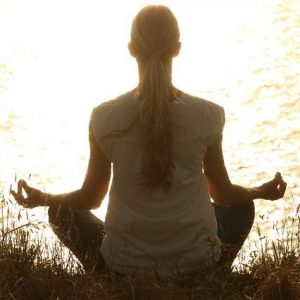
What Silent Retreat Looks Like
When I went on retreat earlier this year, I really had no idea what to expect from the period of silence. It sounds so simple…so simple that I thought it would almost certainly be a waste of time. I was wrong. We started the day on our meditation cushions with some mindfulness of breathing (a simple breathing meditation that usually starts off a period of meditation) and brief guidance from the teacher. We were then instructed that we should try to maintain mindfulness through breathing, sensory experience, body scan and mindful movement for the morning session of approximately 2 hours. There would be a short break, but no talking throughout.
Although I’ve been meditating and practicing mindfulness for over 6 years, this was by far the longest I have spent in meditation. I was daunted, but remembering my mindful practices of non-attachment, I just went for it! I can honestly say that by not having any expectations before the day, it actually helped me to just sit and see what happened. I experienced some mind wandering (obviously) but also achieved the longest period of peace and inner calm than I have ever previously achieved. This was done through listening to the environment – really letting the sounds of ‘now’ into awareness. I don’t mind admitting that I have struggled to have peace of mind for any great length of time over the years, but the benefits of any peace of mind are liberating to say the least. It was interesting to note on silent retreat that even when we were permitted to speak, nobody took up the offer. I also confess that there was a border collie in residence at the retreat and I may have forgotten myself and said hello to him…but I think he kept my secret.
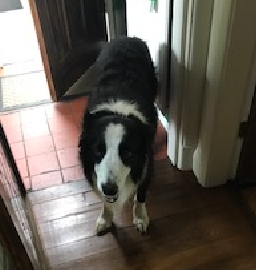
The afternoon continued for another lengthy period of silence; around another 2 hours. Luckily the weather was good enough for mindful walking outside. It was interesting to note that people definitely preferred to stay in their own company drifting off to various corners of the retreat centre and garden, making no eye contact; as though when one kind of social interaction was off limits, all kinds were off limits. It was increasingly difficult to find lengthy periods of peace of mind throughout the day, but when concentrating for such long periods, attention does wander. I tried not to give myself a hard time over this. All participants reported different experiences: some really enjoyed it, others struggled. Spending time alone and in silence is a massive challenge for some personality types. Another reason why it’s so important to let go of judgment and move towards kindness.
What to ‘expect’ from yourself
Silent retreat isn’t easy. It’s a test for experienced meditators and can easily lead to frustration. It’s important to have a solid meditation practice before attempting silent retreat to get the most out of it. There isn’t much time for instruction, no guided meditation and no questioning so you need a full quota of practices to try out through the day/s.
You will find you become tired. It will definitely test your patience. You will have positive and negative thoughts and of course general busy-ness in the mind. That’s all ok! Try to welcome everything and push nothing away. We can place an expectation on ourselves on silent retreat that there will be some kind of breakthrough in our practice. This expectation is something that should be released as soon as possible. Holding onto expectation fuels attachment which definitely gets in the way of awareness. It should be approached the same way as any mindful meditation; without attachment to thought, without agenda and without the need for an outcome. I’d had this retreat booked for about 6 months in advance (people clearly queue up to not talk to each other) so it helped that I had no plans other than to be at the retreat. I had nothing to do but be there – how often does that happen in modern life!?
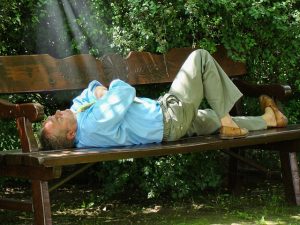
Above all else, remember to be compassionate and kind towards yourself…it’s the key to progress. I think this retreat advanced my practice by giving me a good length of time to practice in isolation. Without the distractions of everyday life and the pressing demands on my time I could really let myself be at ease with meditation. Silent retreat really does feel like a journey (cliché I know) but it’s true! All emotions are experienced. It’s definitely something I’d recommend and it’s certainly something I will be doing again.
Holistic Health Show 2017 – show review 21-22 May
This was my first visit to the Holistic Health Show which is held at the NEC in Birmingham in May each year.
The venue is ideal for this kind of thing so not much needs to be said – lots of space, lots of parking. The parking charge remains scandalous at a £12 flat fee but with free show entry when you pre-register online, you can’t really complain.
Once inside there were goody bags available but it was an immediate bun-fight to grab one before the meagre supplies ran out. As it turns out, it was just a massive paper bag with a cosmetics catalogue inside. I ditched mine as soon as possible as it was a hindrance rather than an help when navigating the very busy show.
The Holistic Health show shares a hall with Hair & Beauty UK. Unfortunately about 80% of the space is hair and beauty with the Holistic Health Show taking up a very small proportion of the event. That said, there were lots of useful stands and exhibitors offering advice, products and workshops. I enjoyed a free meditation session; difficult in the hustle and bustle but worthwhile. There were some great product stands and retailers for aromatherapy in particular.

There was also a free presentation area where speakers delivered sessions throughout the day. I enjoyed a very enlightening session with Cain Leathem of GB Fitness on nutrition and the importance of real ‘personal’ training plan to develop real physical and mental strengths. This appealed to me as I’ve always struggled to gain weight in a health way. I found Cain’s presentation to be genuine and enjoyable.

There was also a large CPD area where sessions could be booked prior to the show and paid for online. A lot of the CPD was very specialised and focused; as a student, I didn’t find this particularly appealing and so didn’t part with my money on this occasion. It might be more worthwhile as a practitioner. Sessions were priced at £15 each but were wide-ranging from therapy for pregnant clients to using essential oils for cancer therapy.
Hair and Beauty UK was an eye-opening experience and was about as far removed from holistic therapy as you could find. I enjoyed looking at some of the bizarre and fantastic treatments in action, but there wasn’t anything that appealed to me in that part of the show.
Unfortunately the holistic side of the show was limited and only took up about 2 hours of my time including the workshop and meditation so it wasn’t a day out. I would go again utilising the free online registration and possibly doing some CPD in the future. It’s not a show that would induce me to part with the £10-£20 on-the-door ticket price however.
The Holistic Health Show is back at the NEC on 20 -21 May 2018
Yoga Masterclass with Yogi Ashokananda
One of the great joys of yoga is that no two teachers are the same. It’s so exciting to experience new flows, styles of teaching and types of yoga to keep the love of yoga alive.
This was the first time I’d managed to book my first choice workshop at the Om Yoga Show (show review can be found here). The session was 90 minutes long for the bargain price of £10. I expected the room to be an uncomfortable, overcrowded affair, but I was pleasantly surprised. Mats were well-spaced and there was enough room to spread out without getting too close to your neighbour (it’s just not very British to touch a stranger – especially a sweaty one).
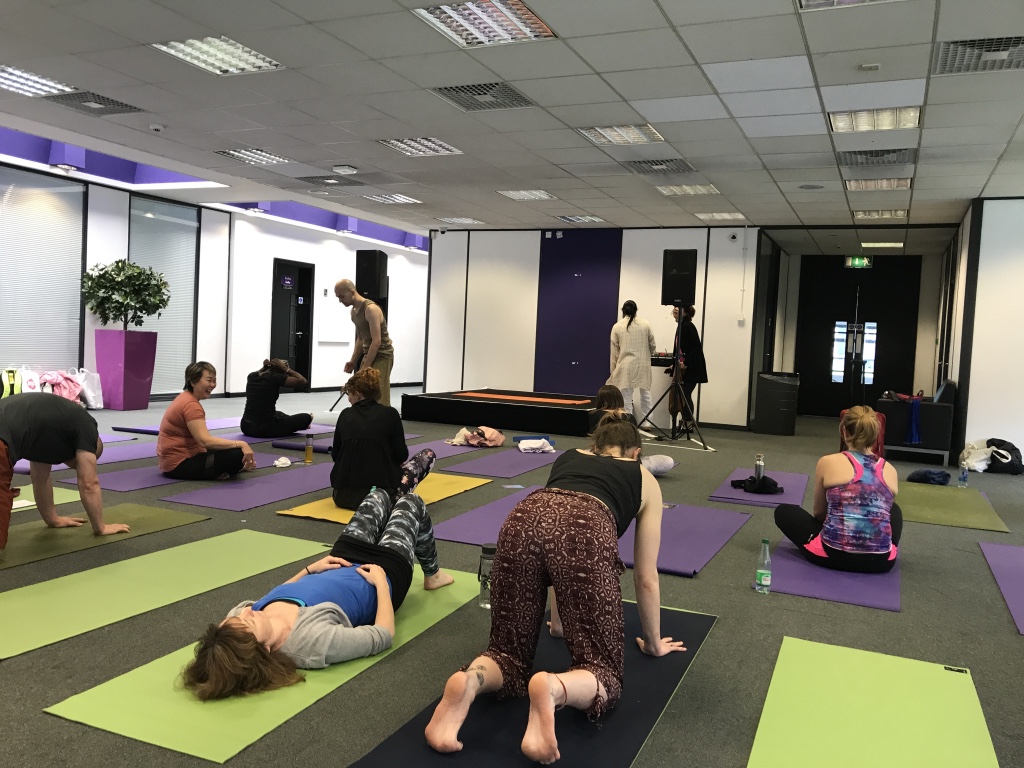
The workshop was billed as a Himalayan Hatha Yoga series with energy to create freedom and lightness in the body. There were intense sun salutations with upward dog kept on the toes rather than the tops of the feet. Looking around, I could tell that everyone found this a change from their ‘norm’. There were people of all abilities in the class which is always great to see and be part of.
We were put through our paces using fast flows, arm balances, strength postures and some of the most intensive Kriya and pranayama I have ever experienced. The breath holds and transitions worked to cleanse the body, generate heat and still the mind. It was very tough! We worked through standing postures testing balance and strength. We added in fast arm movements to challenge concentration and work alongside pranayama. There were opportunities to try transitions from headstand to side crow and back and chair to flying pigeon to name a few. There were also challenging bound postures which I enjoy but really test the limits of patience and surrender. This was a full body and mind workout. We sweated…a lot.
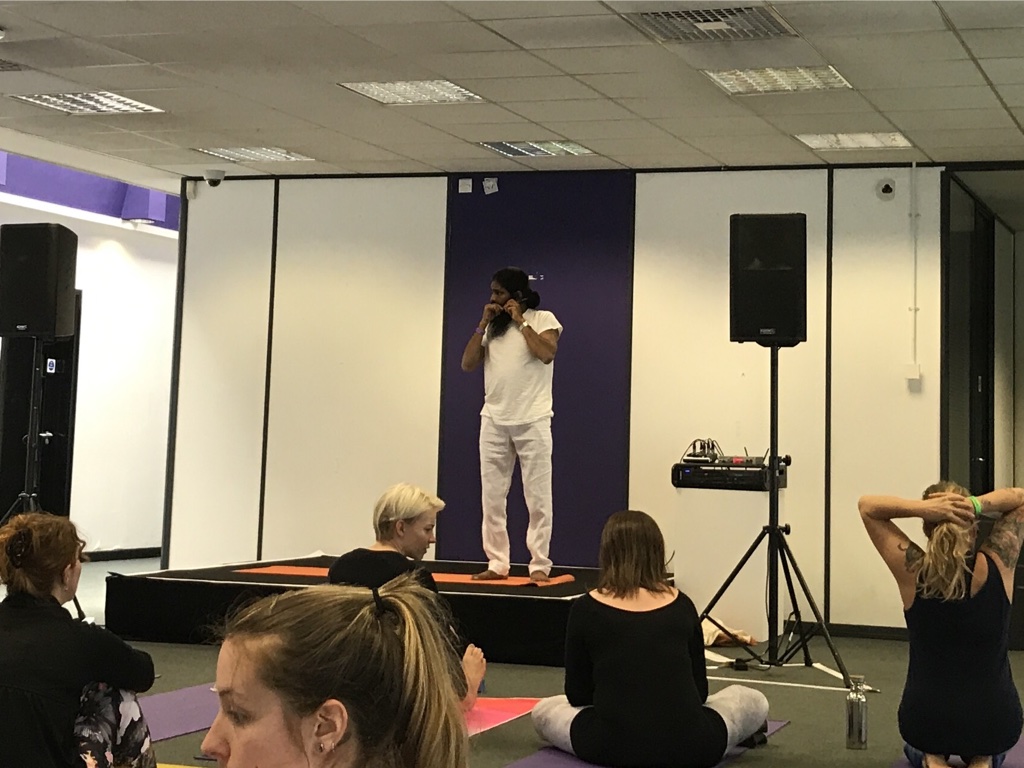
Yogi Ashokananda was encouraging and warm. Although he moved through transitions quickly he was clear in his instruction – although firm when he spotted we were flagging. He added in asanas and movements I haven’t tried or heard of before (wagtail or cheetah pose anyone?) but they were intense. I really enjoy this physical form of yoga because pushing the limits of the body helps to control the mind. I really found this a transformational session and have since used some of Yogi Ashokananda’s practices in my classes, particularly how to move within postures rather than just the traditional holds. I also really enjoyed using pranayama and kriyas as an integrated practice while doing asanas rather than sitting down and doing them separately.
The only let down for me was the poor quality of yoga mats that were provided. They were slippy to the point of being dangerous in a class such as this where sweat was an inevitability. Holding downward dog was a feat of concentration and resolve. I recommend taking your own mat to the Om Yoga Show if you intend to do a workshop.
We finished with some chanting aloud (again not very British) which everyone engaged with (surprisingly). I’m not familiar with the verse we chanted but many were so it was great to be a part of it. I always enjoy some Om chanting at the end of a class though, it just really fills me with happiness.
Yogi Ashokananda prepared us well for the class by saying “corpse pose is called corpse pose for a reason. You shouldn’t do it unless you feel like you’re going to die. Five straight hours of yoga will make you feel like you’re going to die…you only get to do savasana then”. He stuck to his word…there was no savasana after the most intense 90 minutes of yoga I’ve ever done. But, he was right. I didn’t need it and I didn’t miss it.
Namaste
OM Yoga Show 2017 – Manchester show review 19-21 May
This was my sixth visit to the Om Yoga show and the second time I’d been to it in Manchester. At £7.50 entrance fee this is a true bargain. After a succession of London venues that seem to be impossibly difficult (and time consuming) to get to, I thought the chance to drive ‘up north’ would be welcome.
The new venue at Event City was an excellent choice! Loads of free parking right outside the door. It was easy to get to and refreshingly didn’t involve multiple bus/train journeys and lots of waiting around – something that can’t be avoided in getting to the London venues of Alexandra Palace and Olympia.

Goody bags were freely available – no scrum necessary – just inside the door. We were able to help ourselves to show guides and freebies (powdered, vegan supplements for smoothies). The venue was large with lots going on this year. I always feel like the Manchester show might be the poor relation of the London event, but not true this year.
The bonus is that as it’s not as busy as the London show, you can actually get the chance to get into the open classes without a 30 minute queue and this year was the first time I’d managed to book onto my first choice workshop.
The best thing about the Om Yoga show is that it’s a hive of thriving young British businesses – loads of innovation and creativity in clothing, food, drink, styles of yoga and equipment that are freely available to us British yogis.
There was a strong display of exhibitors from therapists, food producers, tea importers, meditation aids, equipment, books, clothing, accessories and interiors. Really everything you’d want to see at this kind of show and far more. The Manchester show is definitely not a runner-up to London any more.
There were 3 open class studios, a children’s yoga studio and a meditation area this year. Classes ranging from gentle introductions, innovative new styles, traditional asanas, challenging backbends and arm balances and focus on all 8 limbs of yoga with some Ayurveda and holistic therapy thrown in. There were 93 free classes to choose from this year so it’s not just a day of shopping and browsing – there are multiple good quality activities to fill the day as well. With about 15 workshops per day ranging from £5 to £10 there were also some world class teachers to choose from for a more in-depth experience. I booked onto a masterclass with Yogi Ashokananda for £10 – the best yoga class I have ever been to! My workshop review can be found here.
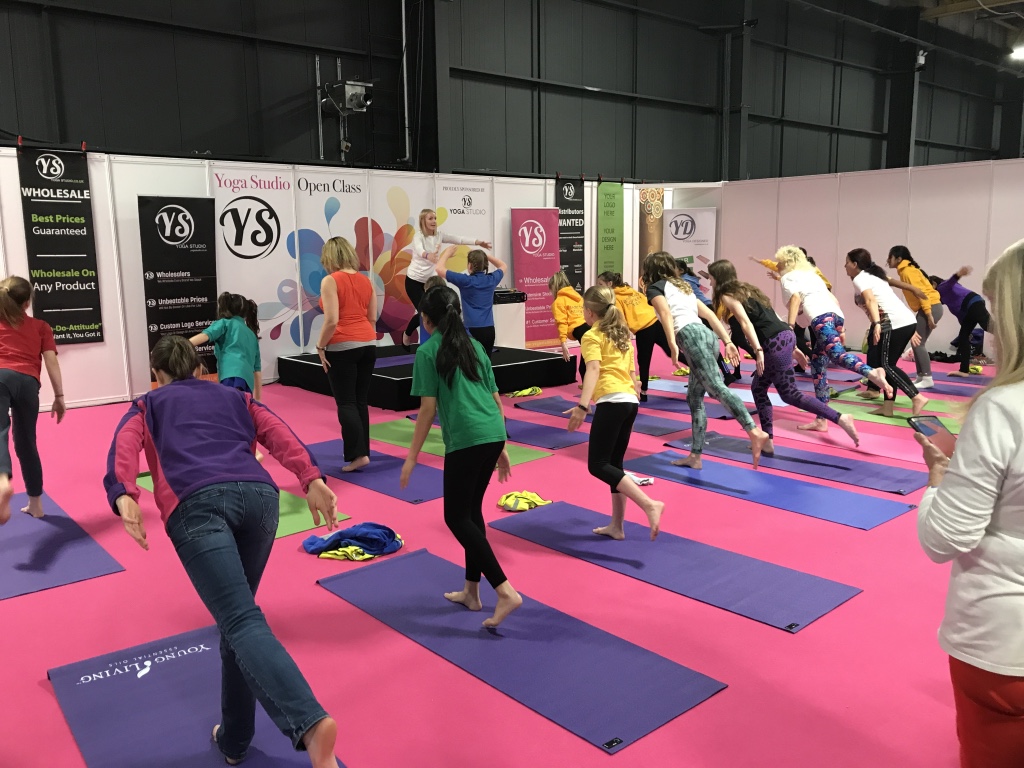
The hot yoga pod was absent this year, but had been replaced by an aerial yoga workshop space. I like that the Om Yoga show encourages attendees to get stuck into new incarnations of yoga as well as sticking to the traditional. Whatever your viewpoint on yoga, there will be something for you to enjoy here.

No review would be complete without a mention of the vegan food court – AMAZING! This year was the best selection of food I’ve ever seen at the show. So many local home kitchens and creative vegan cooks. It was hard to choose, but a special mention needs to go to Home Kitchen Vegan who produced the most fantastic vegan curry.
Special mention to my favourite exhibitors this year:
Yoga clothing to die for The Power of Greyskull
Yoga bliss from a world class teacher Yogi Ashokananda
I dare you to leave without trying one of these drinks by Big Juice
The Om Yoga Show will be back in London 20 – 22nd October 2017
Simple breathing meditation
Breathing meditation is the best starting point when you’re new to meditation and also a good place to return to frequently if you’re a more experienced practitioner.
By focusing the attention on the breath, the mind has a single-pointed focus so that distraction is minimized. Once the mind is calmed in this way, we can achieve space and peace in the mind bringing a greater awareness of our selves and our surroundings.
It’s easy to try anywhere and can help reduce stress, tension and anxiety almost immediately.
To try a simple breathing meditation…
Sit in a comfortable position on a cushion on the floor or on a chair. Keeping the back straight but not tense. Allow the eyes to close naturally, allowing a small amount of light in to help stay alert. Place the hands in the lap with the palms facing upward; one hand resting on top of the other.
Start to feel the sensation of the breath entering the nostrils. Cool air enters as we inhale and warm air leaves as we exhale. Focus your attention on the sensations of breathing. In your mind, follow the flow of air to the lungs and back out. Don’t try to adjust the breathing or count the length of the breath; just let it flow naturally.
Thoughts will enter your mind and draw your attention away. When you notice this happening, gently bring the attention back to the breath. Try sitting for 5 minutes a day with breathing meditation and notice how your mind feels.
Essential oils for stress relief
Scents can be very powerful…triggering memories of people, places and events. They can be very emotive, causing changes in our state of mind as well as impacting on our bodies through the nervous system.
The olfactory nerve that gives us our sense of smell is connected directly to the brain. From here, signals stimulate many different responses throughout the body including being able to trigger physical reactions through working on the autonomic nervous system. Scents can send our body into fight or flight, or they can bring us back to calm.
Essential oils work on the principal of balance; bringing the body mind and spirit back into balance after the stresses and strains of modern life have left us neglecting areas of our wellbeing. Some essential oils have a similar effect on neuroreceptors as many synthetic anti-anxiety medications. On the whole, essential oils work holistically rather than treating a symptom, for a better long-term outlook.
Lavender is one of the most studied essential oils. It calms the nervous system, lowering blood pressure and heart rate, reduces anxiety and promotes sleep. Try adding a few drops of lavender oil to a tissue to inhale throughout the day or add to bath water to gain the full effects.
Bergamot is a symbol of the change from winter to spring as the fruits ripen, making it the ideal scent to try in April. Studies have shown that bergamot is excellent for reducing stress, lowering blood pressure and reducing the heart rate sending the body into relaxation. It can also reduce chronic pain through its relaxing properties. Try mixing a few drops with water and adding to a burner to fill a room with scent.

